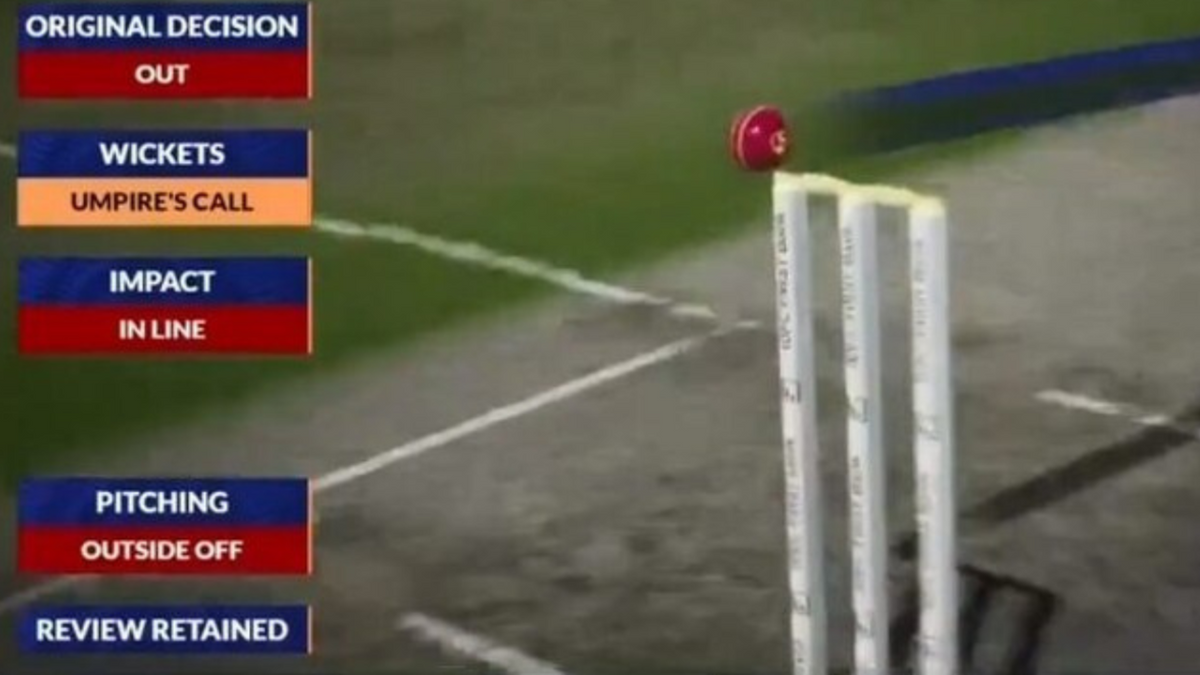
The founder of Hawk-Eye has provided insight into the introduction of umpire’s call in lbw reviews in cricket, saying it was a way to “sell” the DRS to the umpires who were afraid of having their errors shown and pointed out by technology, rather than being due to a margin of error in the technology itself.
Subscribe to the Wisden Cricket YouTube channel for post-match analysis, player interviews, and much more.
The review protocol, which sees close lbw decisions stick with the onfield decision, came under the scanner after England skipper Ben Stokes asked for its abolition following the contentious dismissal of Zak Crawley in the Rajkot Test. On-field umpire Kumar Dharamasena’s decision to give him lbw was upheld on Umpire’s Call despite a graphical error showing the ball would have gone on to miss the top of the leg stump.
“You just want a level playing field,” Stokes said. “The umpires have an incredibly hard job as it is, especially in India when the ball is spinning. My personal opinion is if the ball is hitting the stumps, it is hitting the stumps. They should take away ‘umpire’s call’ if I’m being perfectly honest.”
The Crawley decision was one of several debatable DRS decisions made during the ongoing India-England series, with Stokes himself surviving a dismissal because on umpire’s call in the very next game.
View this post on Instagram
Paul Hawkins, the founder of the Hawk-Eye, dissected the process behind each DRS call and explained why umpire’s call was introduced in cricket in the first place, and dispelled some of the myths surrounding the technology.
“The reason the umpire’s call started was David Richardson had the job when he was in charge of the ICC of bringing in DRS,” Hawkins said, speaking on The Analyst. “And he had a tough sell to the umpires. They had to tell them, ‘This is only for the big errors and things like that’ and the umpires were very against the DRS coming in – from their own perspective, they didn’t want to be shown to be wrong.
“And so the original umpire’s call areas were modelled the way that umpires were evaluated at the international level. So if they’d have gotten an lbw wrong, they had that margin of error of what the original umpire’s call was for whether they get marked out for doing it or not. So that was the starting point because it was a good way to sell it to the umpires.”
He continued: “The argument was to try and make sure you maintain the fabric of the game and the one that looks like it’s sliding down the leg side but clips outside the leg stump, historically kind of felt not out and would probably be given not out it and would you be changing the fabric of the game by ruling that out?”
Hawkins went on to explain that the presence of umpire’s call had nothing to do with the projection of the Hawk-Eye not being trustworthy. “We are a lot, lot more accurate than the size of the umpire’s call area. If you start from scratch [with technology], is there a reason for the umpire’s call? Probably not. Most other sports, it would be a definitive it’s out or not out.”
Another contentious call saw Joe Root dismissed lbw, with the ball judged to have pitched just in line. Hawk-Eye is also widely used in tennis to determine if the ball is out or not out and Hawkins explained how the graphics in tennis are occasionally adjusted to make a tight decision easier to understand for the viewer. He suggested that similar graphical tweaks could be useful in cricket. “In tennis, you will occasionally get zero mm in or zero mm out [in terms of ball pitching outside the line]. But in tennis, it’s decided that it’s not out until it’s not zero mm, but it’s 1mm out. So in tennis, we shift the bounce mark just for the presentation perspective, so a zero mm in becomes a 1mm in to enable the viewers to see the mark. But that’s just a presentation thing. It just makes it clearer to the viewer so it doesn’t become a talking point.
“[The Root lbw] would have been clearer on TV if the track had come off the ball, which happens automatically if the ball does pitch outside leg stump. But unfortunately, since this had just pitched in line, the track is still relevant for whether it went on to hit the stumps, so the track stayed on the ball. It must be one millimetre more in than out because otherwise we wouldn’t have said that it’s pitched in line, but it is a very close one. What Hawk-Eye aims to achieve is to prevent officiating from being the story. The fact that we’re talking about it in this instance means that while our answer is correct, we’ve failed in the ability to not be the story.”








